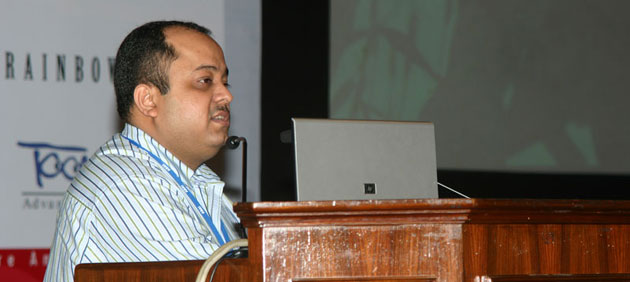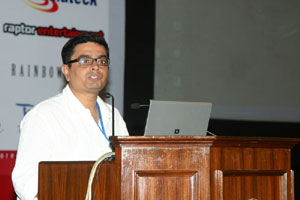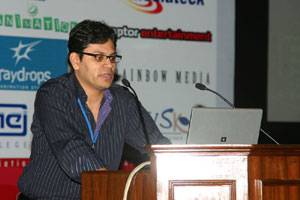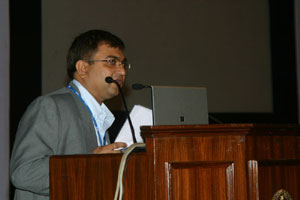
Building the right business models, Great Story Telling, Achieving high quality, Becoming process driven and creating a large pool of talent. That, in a nutshell, is a list of key areas of focus as Indian animation looks forward.
Moderated by Arena Multimedia SVP Atul Vohra, the presenters for the session included Adlabs Animation’s Siddhartha M Jain, National Institute of Design (Ahemadabad) Sekhar Mukherjee and Autodesk M&E’s Pankaj Kedia.
Taking first strike Autodesk Media & Entertainment’s Pankaj Kedia lamented the lack of a proper animation, VFX, gaming training infrastructure in the country. “Currently the training infrastructure is very inadequate” shared Kedia. “There is also a lack of accredited degree programmes for animation at major universities”
He spoke about how the business opportunity at hand was large and that 3D was becoming the predominant medium. Identifying pre visualization as a potent business model, Pankaj pointed out that “Animation Studios in the country can also look at the pre-viz market. It is a big market in Hollywood. Pre-Viz is actually 3D storyboarding and we could have quite a few Indian players specializing in this”

Next on the dais was NID’s Sekhar Mukherjee. Sharing good tidings with the community, Sekhar stated that “As an Institution we have had a great legacy of animation, now adding to that legacy we are also opening up to the industry as an organization”
“We are also open to sharing our curriculum with other institutes” added Sekhar.
Comparing the past, present scenario and the future prospects of Indian animation Sekhar pointed out that “We have all gained from our experiences and mistakes in the past. Today thanks to various means of interacting with each other through online media as well as on ground fora the gap between industry and academia is narrowing. We are working towards delivering the kind of education that the industry demands and similarly our doors are always open for the industry to come across and discuss”
“A bright future awaits all of us in Indian animation, so let us be more daring and confident” added Mukherjee.
“The challenge of course lies in having more institutions like NID, finding good faculty to teach and to create a large pool of competent human resource in the country” he concluded.

The third and final speaker for the session Adlabs Animation’s Siddhartha M Jain spoke about Business Models in Original Indian animation.
“There are very few business models in original Indian animation” stated Jain. “There is TV series, D2DVD, home video and Theatrical. Of these the success of Hanuman has made a lot of big players try and tap the theatrical market”
“There are of course many challenges in the theatrical space. First is identifying the genre of animated movie that one wants to make. Next is finding the funding and then even more important and challenging is how does one create a model where invested fund can be recovered” added Jain
“Within Genres, one approach is to use public domain stories but to give them a treatment that makes them stand out. The other option is to create Story, characters and IPR right from scratch. Whatever the case, there has to be at least one powerful character that could lend itself to Licensing & Merchandising” he further elaborated.
Sharing some concerns, Jain pointed out that “Very few animation studios are focusing on story and dialogue. A majority of them are busy with improving the quality of textures, models, lighting and so on. That’s great for the production, but development and pre production requires focus on story aspects”
He also cautioned that many players were jumping on to the bandwagon before having a clear road map. “Please make note that when you are creating an animated feature for theatrical release in India, you are not only competing with other International animated features but also with the entire live action gamut including Hollywood and Bollywood”
Jain also shared that because there is no established history of animation in India, there is not much development fund available. “Pre Sale advances also aren’t many. In such a scenario even while the market looks promising, one has to clearly define audiences and focus on catering to them” concluded Jain.

Concluding the session Arena Multimedia SVP Atul Vohra shared the summary
“Four key components that have been identified in this session”
-The technology component that is needed to make the animation production faster
– Process development and the quality aspect, is the next step
– Trained Human Resource is the third
– One also needs to be very clear about the business model and how investments made in Indian IPR would be recovered
– Over and all the most important thing is story